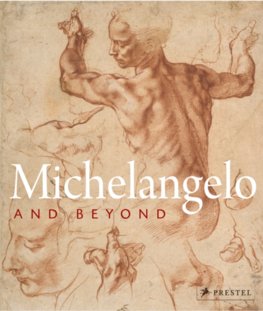


Michelangelo’s nude drawings are celebrated for their depiction of the heroic figure. Emanating exceptional strength, monumentality, and vigorous emotions, his nudes became the standard bearers for centuries of figure drawing. This book examines the legacy of that ideal, through highly engaging texts and luminous reproductions of drawings, prints, and sculptures.
In addition to key works by Michelangelo—including drawings for the Sistine Chapel, the unfinished fresco of the Battle of Cascina, and the tomb of Pope Julius II—readers will discover works by Raphael, Dürer, Rembrandt, Rubens, Klimt, and Schiele. Each chapter highlights a significant aspect of Michelangelo’s ideal of the human body and investigates its influence and adaptation by his contemporaries and subsequent artists. Topics such as depictions of Adam and Eve, the Crucifixion and the Pietà , and motifs from mythology such as the Labors of Hercules; how Michelangelo’s methods were taught in art schools from the 17th to the 19th century; the emergence of woman as subject; and the decline of the idealized human figure during modernism.
These side-by-side comparisons provide generous insights into how artists portrayed the human body—as a model of virtue and heroism, and as a conveyor of vice and fragility. Together these texts and examples provide the perfect resource for students of the human form and of the history of western art.
| Vydavateľ |
Prestel |
|---|---|
| Jazyk | anglický |
| Väzba | Hardback |
| Počet strán | 264 |
| Formát | 295 x 255 |
| EAN | 9783791377162 |
| Rok vydania | 2023 |
| Edícia |
Dejiny výtvarného umenia |